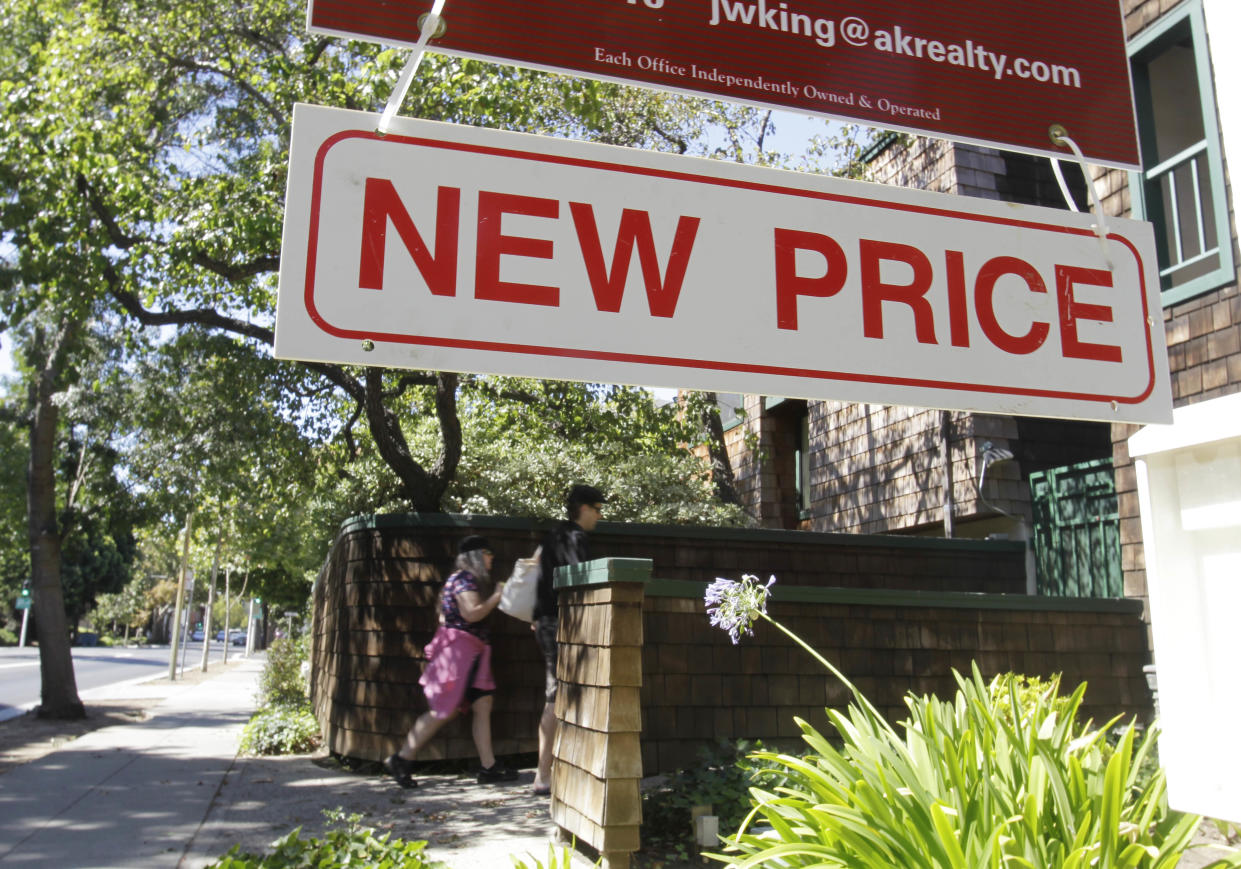Home prices hit a new high in May as inventory remained woefully low
US home prices hit a record high in May, a new report found, largely reflecting deep inventory constraints.
Nationally, prices increased 0.7% from April to an annualized rate of 8.9%, per mortgage tech and data provider Black Knight. Home prices have continued to increase since the start of the year and were 0.1% higher in May compared to a year prior.
The dramatic run-up in prices was due to low levels of inventory. According to the analysis, active listings have declined sharply in 95% of major markets this year — and were more than 50% below pre-pandemic levels.
The results underscore how tough the housing market has become for homebuyers as they face rising mortgage rates and acute inventory shortages that push prices higher.
“There is no doubt that the housing market has reignited from a home price perspective,” Andy Walden, Black Knight vice president of enterprise research, said in a statement. “Firming prices have now fully erased the pullback we tracked through the last half of 2022 and lifted the seasonally adjusted Black Knight Home Price Index to a new record high in May.”

Large markets hit hard
The low amount of resale inventory pushed home prices higher in May.
At least 27 of the 50 largest markets in the nation — primarily in the Midwest and Northeast — saw home prices return to their 2022 peaks or set new highs in May, according to Black Knight’s latest Mortgage Monitor report. Just eight of the top 50 markets had home prices that were more than 5% below their 2022 peaks.
“The reheating is widespread,” Walden said in a statement. “While prices are still well below peak levels across the West and in many pandemic boom towns, price firming in recent months has begun to close those gaps.”
For instance, San Jose experienced the largest month-over-month price gain of any market, Black Knight found, with prices growing by 1.4%. This was followed by San Diego (1.1%), Los Angeles (1.0%), San Francisco (0.9%), Seattle (0.9%), and Sacramento, Calif., (0.8%).

Austin, Texas, was the exception where home prices were down 13.8% below peak — the largest gap of any market. Inventory levels in Austin sat above pre-pandemic levels.
“Unlike Austin, for-sale inventory is moving the other direction in much of the country,” Walden said.
New construction, however, offered buyers a glimmer of hope.
Single-family homes made up 40% of total projects underway, though they remained 30% below the 2005 peak, Black Knight noted. According to economists, the upswing of newly built homes could pull even more buyers to the market.
“...New construction starts and completions were both strong in May, which is welcome news,” Walden said. “However, most projects underway in the month were 5+ multi-family units, as opposed to single-family residential (SFR) units.”
Mortgage rates don't help
Affordability was close to hitting its lowest point since the Reagan era this spring, as mortgage rates remained firmly stuck within the 6% range — and continue to deter current homeowners from listing.
Though for-sale inventory inched up some, it was still 51% off pre-pandemic levels.
More than 60% of existing mortgage holders and potential sellers carry a mortgage rate below 4%, leaving many “with significant disincentive to list in this high-priced, low inventory, high-rate environment,” the report found.
According to Black Knight, it takes 35.7% of the median household income to make the average principal and interest payment on a home this spring. That’s the highest payment-to-income ratio since roughly October 1985, when it took 36.01% of household income to make that payment, Black Knight's Walden previously told Yahoo Finance.
The only thing keeping May from being the most unaffordable month for housing in the past 37 years was income growth from the fall of 2022. As of June 22, the principal and interest payment required to purchase a median-priced home increased to $2,258, up from the $2,238 last November, Black Knight found — the highest payment on record.
“The same lever used to reduce demand – that is, raising rates – has not only made housing unaffordable almost universally across major markets, it has also resulted in significant supply shortages,” Walden said. “At this point, even if rates come down, but not so sharply as to entice potential sellers out of their sub-3.5% mortgages, it could risk a widespread reheating of home prices across the U.S.”
Gabriella Cruz-Martinez is a personal finance reporter at Yahoo Finance. Follow her on Twitter @__gabriellacruz.
Read the latest financial and business news from Yahoo Finance
